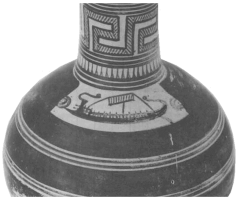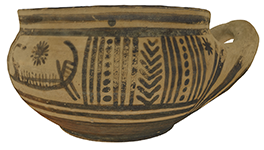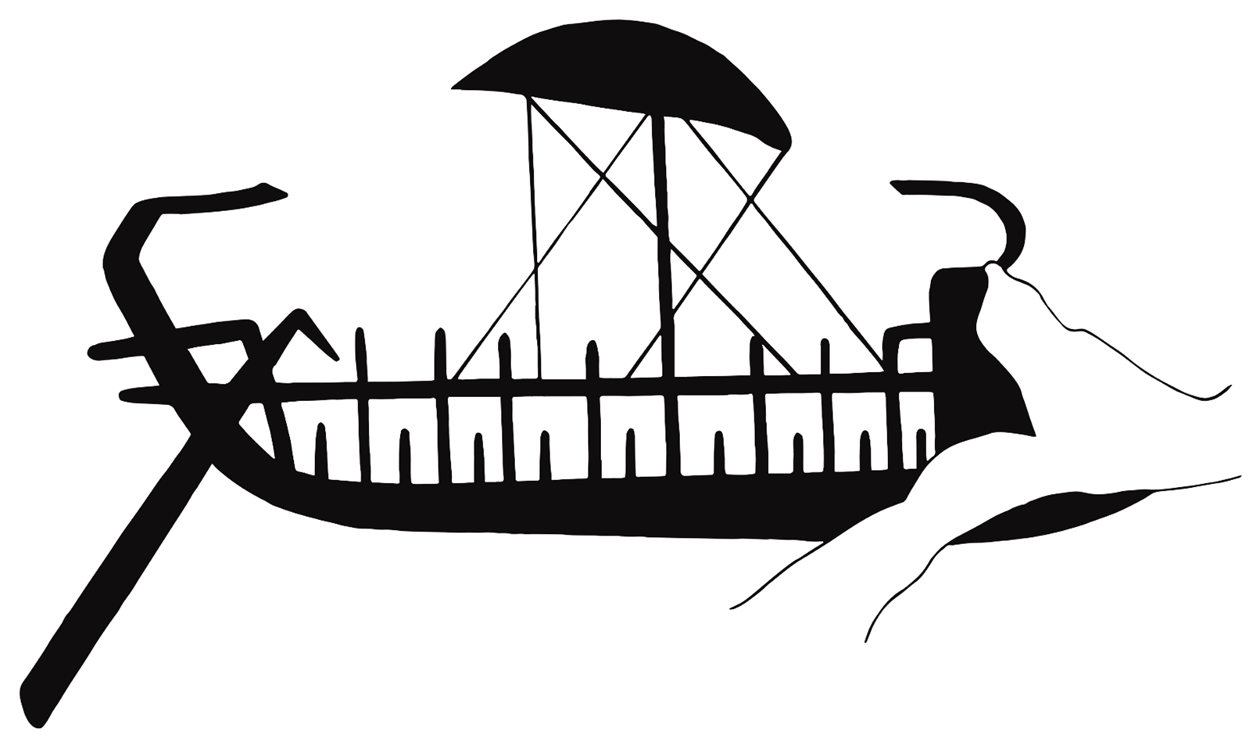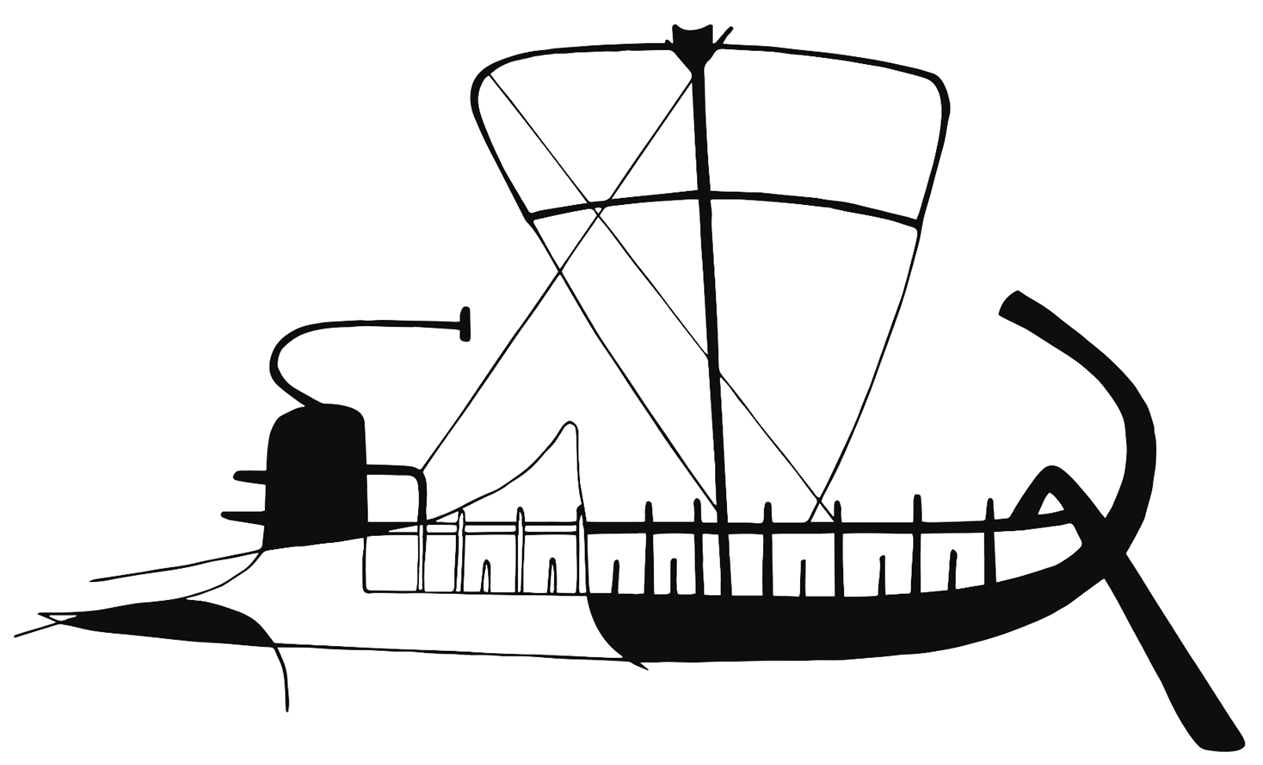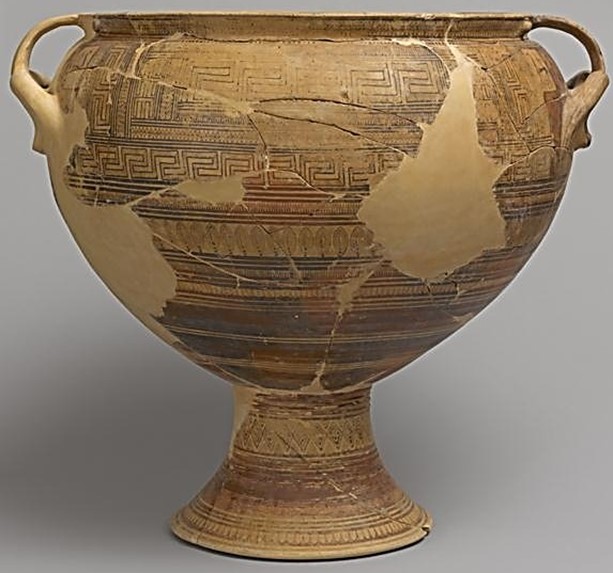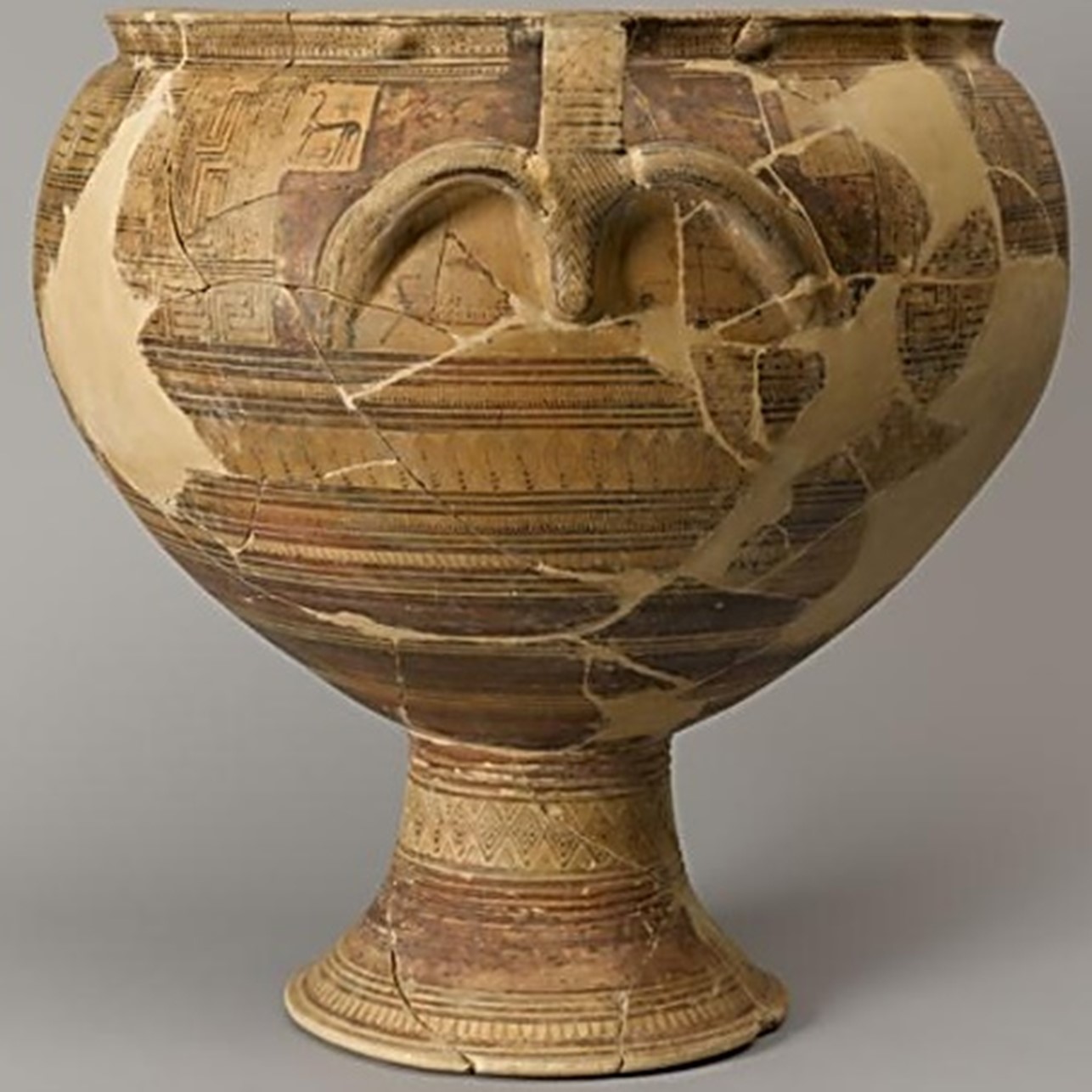Two identical single-levelled ships except for some differences in the rigging and the rendering of the sternpost. Low flat hull, massive square bow with a vertical stempost and a high incurving sternpost. The horn is not a smooth continuation of the stempost but appears attached separately midway on top of it. It inclines forwards, then sharply backwards parallel to the hull and is capped by a short vertical stroke on the right ship where it is fully preserved. The right ship has an eye rendered as a four spoked star within a within a reserved rectangle. The fore- and aftercastle are comprised by an L-shaped railing. Above the hull is a single horizontal line, with the two connected by vertical strokes which extend beyond this railing. These stanchions alternate with shorter verticals which represent the tholepins. There are nine rower's rooms on the left ship where this section is fully preserved, and a reconstructed nine for the other. The left ship has two short plank protrusions from the sternpost, which are a continuation of the upper horizontal line and the L-shaped railing respectively. This is repeated for the stempost, which is still visible on the right ship. The steering oar is rectangular in shape and has a loom. The mast is approximately amidships and has a deployed sail with several rigging elements which are very faded so it is difficult to tell whether some are missing. The mast of the right ship is forked at the top and may have a crow's nest. The left ship has a semicircular sail billowing to the right, with five lines which must be brailing ropes attached to the railing. The right ship has a somewhat rectangular sail with rounded upper corners, with four lines representing brailing ropes and possibly a forestay attached to the L-shaped railing at the bow.
Two sailing galleys
A125a-b
Middle Geometric/ Late Geometric transition (c. 760-750 B.C.)
Attica
H: 72 cm; diameter: 70 cm
Attic pedestalled krater
Louvre CA 6827
Coulié 2013: 45, fig. 11; Williams 2015: 254, fig. 2
The level of detail of the rigging is very unusual for the Geometric period, all the more so that this is one of the few MG pieces. The crucial transition between the stempost and the bow projection is not preserved on either ship, so it is difficult to comment on that important feature. The thickness and length of the bow projection is also somewhat conjectural, although it appears that it extended straight from the keel-line rather than curving upwards. The presence of a tholepin below the L-shaped railing at the bow of the left ship poses problems regarding its interpretation as belonging to a forecastle. Unlike the right ship, the sternpost's device of the left one does not curve smoothly but instead takes two sharp bends, giving it a more blocky appearance. This is however unlikely to be indicative of actual structural differences. It is possible that what seemingly appears as a block of paint at the top of the mast of the right ship is a crow's nest. This element is fairly faded but appears more clearly with added contrast.
Coulié, A. 2013. La céramique grecque aux époques géométrique et orientalisante (XIe-VIe siècle av. J.-C.). Paris : Picard & Epona.
Williams, D. 2015. “Ship, Horse, Battle: Some Attic Geometric Fragments from the Sanctuary of Aphaia, Aigina and Attic Geometric Gold Jewellery,” in V. Vlachou (ed.) Pots, Workshops and Early Iron Age Society: Function and Role of Ceramics in Early Greece. Proceedings of the International Symposium held at the Université libre de Bruxelles 14-16 Novembre 2013. Études d’Archéologie 8. Brussels: CReA-Patrimoine, pp. 253-266.



